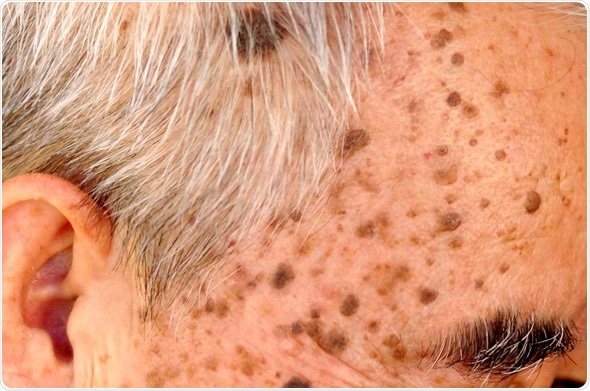For The Latest Medical News, Health News, Research News, COVID-19 News, Pharma News, Glaucoma News, Diabetes News, Herb News, Phytochemical News, Thailand Cannabis News, Cancer News, Doctor News, Thailand Hospital News, Oral Cancer News, Thailand Doctors
Avoiding the cause of actinic keratosis is key for the prevention of the skin condition. The primary cause of the condition is ultraviolet (UV) radiation from sunlight and sun protection is, therefore, essential in the prevention of the skin condition.

The most effective way to prevent actinic keratosis is to practice adequate skin protection methods when exposed to sunlight. The following techniques can help to protect skin from the UV rays in sunlight and prevent actinic keratosis:
In general, it is best to keep to shaded areas between 10 am and 2 pm, when the sunlight and UV radiation are the strongest and most likely to cause damage to the skin cells.
Wearing the appropriate clothing to protect the skin from the sun is particularly important for people who work in an outdoor environment. These individuals spend considerably more time than average in the sun, and the cumulative exposure causes actinic keratosis.
The clothing recommendations include a long-sleeved shirt, wide-brimmed hat and sunglasses. Although sunglasses will not help to prevent actinic keratosis, they are important to protect the eyes from exposure to sunlight.
Sunscreen is very useful to protect skin from UV radiation in sunlight. There are several important factors in the way that sunscreen should be used for optimal results.
Although actinic keratosis most often presents in the elderly, sun protection for young children who have sensitive skin is essential. This is because their skin can be damaged more easily and sun exposure can eventually lead to the presentation of actinic keratosis.
Similar to sunlight, the radiation used for tanning beds usually contains UV rays and can be very harmful to the skin. Tanning salons should be avoided to help prevent actinic keratosis.
In addition to UV radiation from sunlight, there are various other potential causes of actinic keratosis. In order to prevent the condition, these causes should also be avoided or used only when absolutely necessary. They include:
It is important for patients to keep track of changes to their skin so that they can recognize early signs of actinic keratosis. In doing so, they can prevent the progression to more serious conditions, such as squamous cell carcinoma (SCC).
Additionally, an annual check-up including a professional skin exam is recommended for adults over that age of 40, who are most likely to present with signs of actinic keratosis. This includes a general examination of all skin, with a particular focus on the areas that are frequently exposed to sunlight.